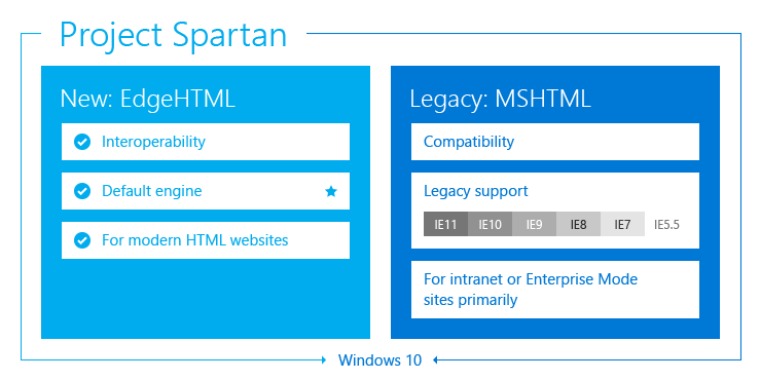
A couple of days ago Microsoft held a big event where it opened up the floodgates to news on Windows 10 and all of its future products. As part of that, we got to hear about the company’s new browser “Project Spartan” and now we finally have a bit more info on what's powering it.
Thanks to leaks and scoops, we first found out about Spartan and Microsoft’s plan to move away from the ever-maligned Internet Explorer, a long time ago. However, we never got to hear the full story on what exactly makes Spartan different.

Over the past few days we finally saw the UI of Spartan, some of its new features such as annotations directly on webpages, the reading list and integration with Cortana. But there’s still a question of what’s actually going on under the hood? Is this really a whole new browser?
Microsoft keeps saying yes. The company mentioned it numerous times, on stage and in posts, and unequivocally stated that Spartan featured a “new rendering engine”, meaning this was indeed a whole new browser and not your grandpa’s IE.
However, as Neowin has explained before and as Mary Jo Foley reports, that’s not the full story. Spartan is still IE in certain aspects. Trident hasn’t gone anywhere, it’s just been forked into a new version which uses an “Edge mode platform”.

What this means is that the new rendering engine – which Microsoft confirmed is indeed spun off of Trident, though is now supposedly very different – is still familiar to all IE users.
However that’s not to say Spartan is just IE in disguise, far from it. The company explained in a full statement:
The Spartan rendering engine (edgehtml.dll) is a new component and separate from Trident (mshtml.dll). The new engine began as a fork of Trident, but has since diverged rapidly over the past many months, similar to how several other browser engines have started as forks prior to diverging. The new rendering engine is also being built with a very different set of principles than Trident - for example: a focus on interoperability and the removal of document modes.
What this hopefully means, is that Spartan will be lightweight, modern, offer better compatibility with the web as a whole, be more in line with other browsers and be a truly cross-platform browser for all of Microsoft’s platforms. It also means that Trident and IE are still present with a nod and wink to enterprise customers who will need backward compatibility.
For most users none of this will matter: a “new” browser with better performance, compatibility and glossy features is perfect to get away from IE’s legacy. For the rest of us, well, it’s just interesting to note what runs under the hood, before the WebKit rumors started running rampant.
Via: ZDNet




















40 Comments - Add comment